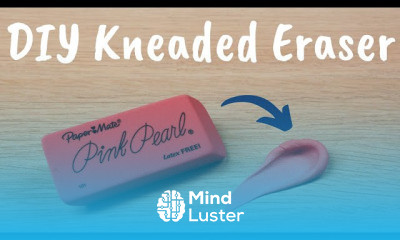How to Draw A Winter Landscape in Pencil
Share your inquiries now with community members
Click Here
Sign up Now
Lessons List | 35
Lesson
Comments
Related Courses in Drawing
Course Description
acrylic painting, painting executed in the medium of synthetic acrylic resins. Acrylics dry rapidly, serve as a vehicle for any kind of pigment, and are capable of giving both the transparent brilliance of watercolour and the density of oil paint. They are considered to be less affected by heat and other destructive forces than is oil paint. They found favour among artists who were concerned about the health risks posed by the handling of oil paints and the inhalation of fumes associated with them. Because of all these desirable characteristics, acrylic paints became immediately popular with artists when they were first commercially promoted in the 1960s. Notable 20th-century artists who used acrylic paint include Pop artists Andy Warhol and Roy Lichtenstein, Op artist Bridget Riley, colour field artists Mark Rothko, Ellsworth Kelly, and Barnett Newman, and British artist David Hockney.
Acrylic paint is a fast-drying paint made of pigment suspended in acrylic polymer emulsion and plasticizers, silicon oils, defoamers, stabilizers, or metal soaps Most acrylic paints are water-based, but become water-resistant when dry. Depending on how much the paint is diluted with water, or modified with acrylic gels, mediums, or pastes, the finished acrylic painting can resemble a watercolor, a gouache, or an oil painting, or have its own unique characteristics not attainable with other media.
Acrylic painters can modify the appearance, hardness, flexibility, texture, and other characteristics of the paint surface by using acrylic mediumsor simply by adding water. Watercolor and oil painters also use various mediums, but the range of acrylic mediums is much greater. Acrylics have the ability to bond to many different surfaces, and mediums can be used to modify their binding characteristics. Acrylics can be used on paper, canvas, and a range of other materials; however, their use on engineered woods such as medium-density fiberboard can be problematic because of the porous nature of those surfaces. In these cases, it is recommended that the surface first be sealed with an appropriate sealer. Acrylics can be applied in thin layers or washes to create effects that resemble watercolors and other water-based mediums. They can also be used to build thick layers of paint — gel and molding paste are sometimes used to create paintings with relief features. Acrylic paints are also used in hobbies such as trains, cars, houses, DIY projects, and human models. People who make such models use acrylic paint to build facial features on dolls or raised details on other types of models. Wet acrylic paint is easily removed from paintbrushes and skin with water, whereas oil paints require the use of a hydrocarbon.
Acrylics are the most common paints used in grattage, a surrealist technique that began to be used with the advent of this type of paint. Acrylics are used for this purpose because they easily scrape or peel from a surface.
Trends
Learning English Speaking
MS Excel
Speak english fluently with confidence
Building a chatbot with Python
Generative AI tools for 2024
Python programming fundamentals A Z
Content marketing for beginners
Creating YouTube videos for beginners
Python programming language
Python machine learning for beginners
Marketing basics for beginners
Cybersecurity fundamentals A Z
Phrasal Verbs in daily conversations
Makeup and Beauty
Tools and toolbar in Photoshop for beginners
Design Thinking
Introduction To Cyber Security
PGP in data science and engineering
Excel Power Query in excel for beginners
Python Programming | Edureka
Recent
Arabic numbers for beginners
Rating arabic handwriting techniques
Form verbal sentences in arabic
Arabic sentence structure for beginners
Phrasal Verbs in daily conversations
Speak english fluently with confidence
Rules for plural forms of irregular nouns
English slang dictionary for fluency
English idioms for everyday conversations
Native english vocabulary for fluency
Teach reading with Phonics for beginners
English speaking confidence techniques
Business english communication skills
American english conversation for beginners
Advanced english listening and vocabulary
English prepositions for beginners
Improve english Pronunciation for beginners
PGP in data science and engineering
Building a chatbot with Python
Python programming fundamentals A Z



















